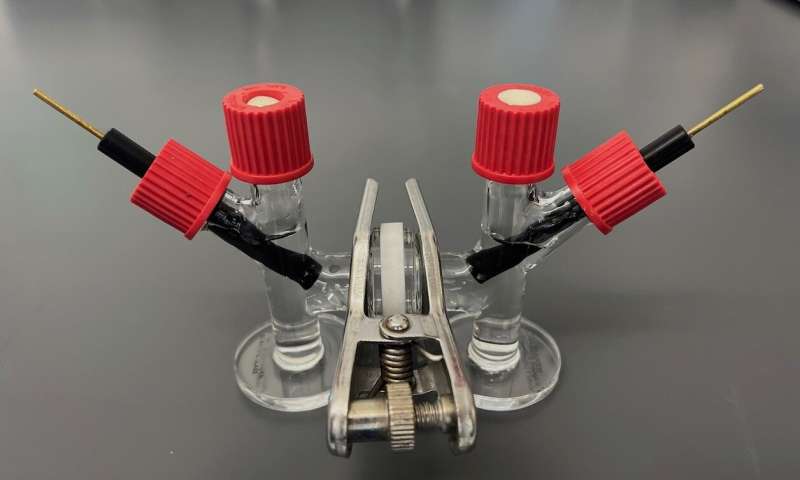
The goal of developing a handheld tool similar to an alcohol Breathalyzer that can detect THC on a person's breath after they have smoked marijuana is closer to being realized.
In a paper published in the journal Organic Letters, UCLA organic chemistry professor Neil Garg and researchers from the UCLA startup ElectraTect Inc. describe the process by which THC introduced, in a solution, into their laboratory-built device can be oxidation.
The availability of a Breathalyzer-like tool could help make roads safer with the recent legalization of marijuana in many states. Marijuana use impairs certain driving skills and is associated with an increased risk of accidents.
Garg and Darzi discovered in 2020 that removing a hydrogen molecule from the larger THC molecule causes it to change colors. The oxidation process is similar to the alcohol breath analyzer which converts alcohol into an organic chemical compound through the loss of hydrogen. The oxidation leads to an electric current that shows the concentration of alcohol in the breath.
The researchers have been using their patent-pending oxidation technology to develop a breath analyzer that works the same as the one they found in 2020. The patent rights from UCLA have been licensed by the company.
What is the new device like?
The new paper shows how the lab-scale THC-powered fuel cell sensor works. When Delta-9-tetrahydrocannabinol comes into contact with a negatively charged anode on one side of the device's H shaped glass chamber, it oxidizes into a new compound called THCQ. The stronger the current, the higher the concentration of cannabinoids.
It is the first time that a fuel cell sensor has been powered by THC. The researchers expect that the relatively simple, inexpensive technology can be scaled up for economical mass production, and they are currently working to refine the device to detect and measure THC in exhaled breath and to shrink it to a more compact size suitable for use in a handheld breath tester.
Marijuana testing should be simpler and more fair.
The technology has the potential to make marijuana law enforcement more fair. A urine or blood test can be used to detect the presence of the drug in a driver. These tests are difficult to administer at the roadside because the compound can linger in the body for weeks after marijuana use without any cognitive effects. Even if an individual is not high when tested, they can still be fined, imprisoned or lose their job.
The need for innovative forensic technologies that are easier to use and more accurate is highlighted by these issues. While a commercial marijuana breath analyzer based on their technology is several years away, Darzi and Garg stressed that such a tool could have benefits beyond traffic safety and law enforcement.
In any situation where fair marijuana testing is critical, including in the workplace, where employees might be operating machinery, or even at home, where individuals may one day be able to use it proactively, their technological breakthrough could eventually be used.
More information: Di Huang et al, A Cannabinoid Fuel Cell Capable of Producing Current by Oxidizing Δ9-Tetrahydrocannabinol, Organic Letters (2022). DOI: 10.1021/acs.orglett.2c02289 Journal information: Organic Letters